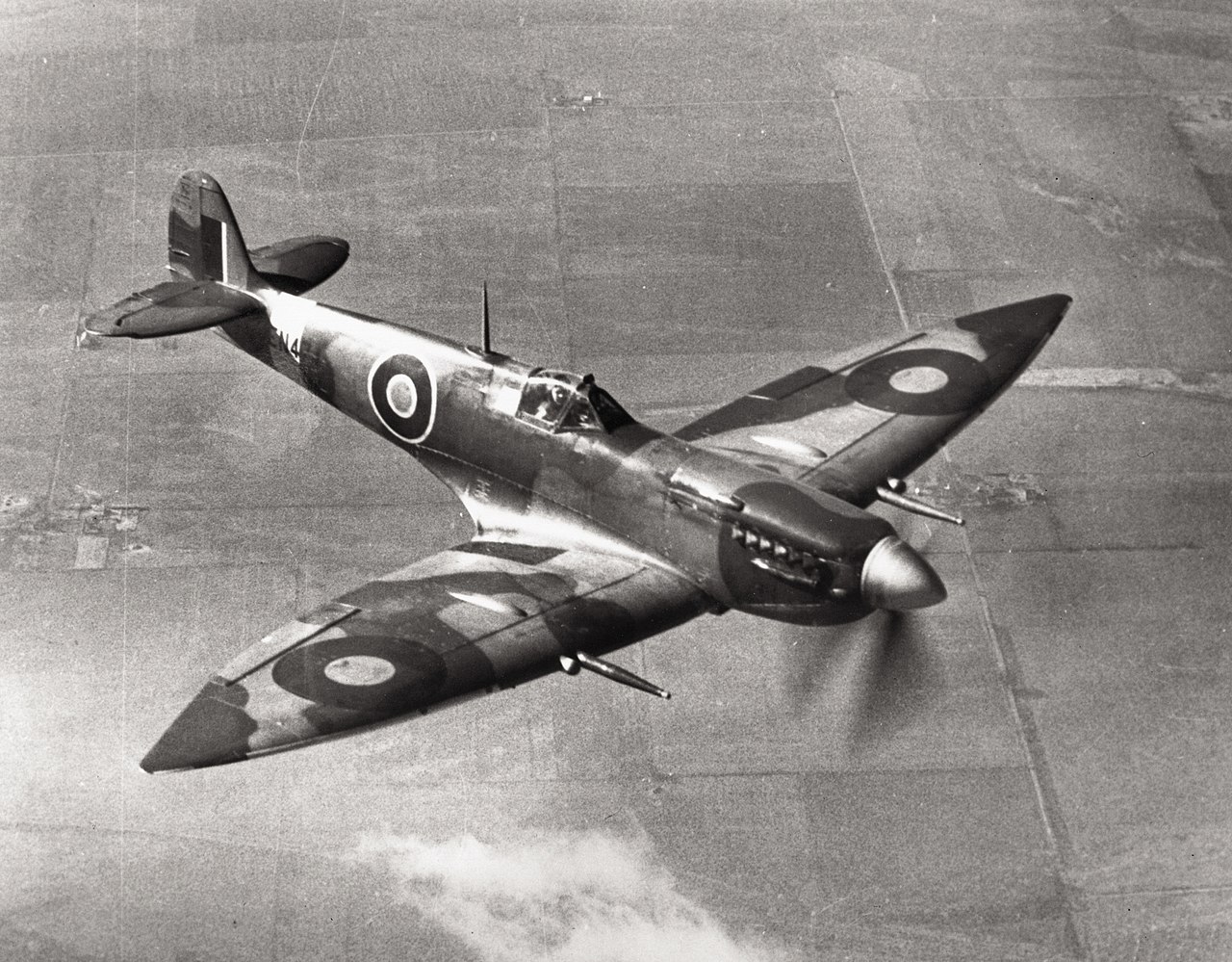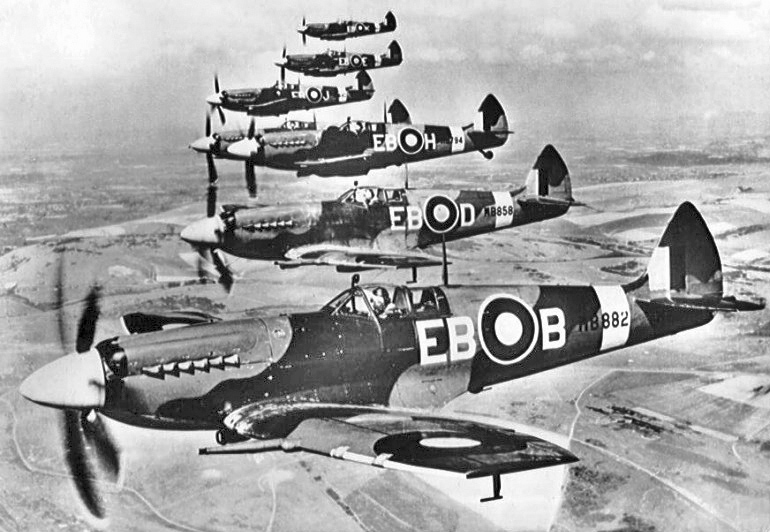Supermarine Spitfire
From Our Contribution
 Supermarine Spitfire Mk XIIs of 41 Squadron | |
 Public Domain, https://commons.wikimedia.org/w/index.php?curid=1183115 retrieved 31 Jan 2020 | |
| History | |
|---|---|
| Type | Supermarine Spitfire |
| Role | Photo Reconnaisance / Fighter |
| Designer | RJ Mitchell |
| Manufacturer | Supermarine Aviation Works Ltd |
| Number built | 20,351 in a large number of variations |
| Primary users | RAF; RCAF; RAAF |
Contents
Remarks
The Supermarine Spitfire was the only WW2 Allied fighter aircraft to fight in front line service from the beginnings of the conflict, September 1939, through to August 1945. Post-war, many Spitfire's remained in service until the 1950s. A large number of improvements and variants emerged over time as the plane's role changed and lessons were learnt in operation. The plane was manufactured before, during and after the War years, fulfilling a front line fighter role until well into the 1950s. The last offensive sorties made by RAF Spitfires occurred over Malaya on 1 Jan 1951.
Its wings were made of wood, with four basic types, A, B, C, and D. Each type supported a different gun platform ranging from all machine guns; to all cannons; or a combination of machine guns and cannon. As well as being a more than useful fighter aircraft it evolved into a multi role aircraft as the Spitfire was a pioneer in the role of the unarmed, photo reconnaissance (P.R.) aircraft that relied on high speed and high altitude to avoid detection and attack. It also saw service as a night fighter for a short time.
The Spitfire's greatest moments occurred during the Battel of Britain, when together with the Hawker Hurricane they faced the German Luftwaffe's onslaught on Britain from 10 Jul to 31 Oct 1940. The Hurricanes were a more stable gun platform and engaged the bombers, while the Spitfires were tasked with keeping enemy fighters away from the Hurricanes. During this period spitfire losses were 208 combat losses, 42 flying accidents and 7 destroyed on the ground.
Flying PR missions was not an easy occupation. Spitfire pilots often flew missions lasting seven hours or more; the cramped cockpit was uncomfortable, although the introduction of heating and, later in the war, pressurization, relieved some of the discomfort. later versions which did have radio, the pilot was expected to maintain radio silence throughout the flight. The pilot of a high-flying Spitfire would keep constant watch on the rear- view mirror to make sure that a contrail would not betray its presence, and he also had to keep an eye out for enemy fighters trying to intercept. Without the help of another crew member a PR Spitfire pilot had to be a good navigator, usually relying on dead reckoning. Once over the target to be photographed, a precise course and altitude was set and maintained. Even a small deviation from straight and level flight could mean that the cameras would miss a small target by hundreds of yards. Several different paint schemes were used by the early photo-reconnaissance Spitfires until an overall "PRU Blue" was adopted for the majority of PR aircraft from late 1941.<ref>
General characteristics
- Crew: Pilot
- Length: 9.12 m
- Wingspan: 11.23 m
- Height: 3.86 m
- Empty weight: 2,297 Kg
- Max takeoff weight: 3,039 Kg
- Powerplant: 1 x Rolls Royce merlin 45 supercharged V12 engine
- Maximum speed: 595 km/h
- Range: 756 km
- Service ceiling: 11,125 m
- Armament
- Guns: Five variations available depending on wing type. From 8 x .303 machine guns to 4 cannons or a mixture of the two.
- Bombs: Optional fitting of 2 x 113 kg bombs.
Air Crew
No. 8 (Coastal) Operational Training Unit RAF
- † Alan Wesley Hain 12 Feb - 16 Apr 1943
No. 681 Squadron RAF
- † Alan Wesley Hain 15 May 1943 - 28 Sep 1943 KIA Burma